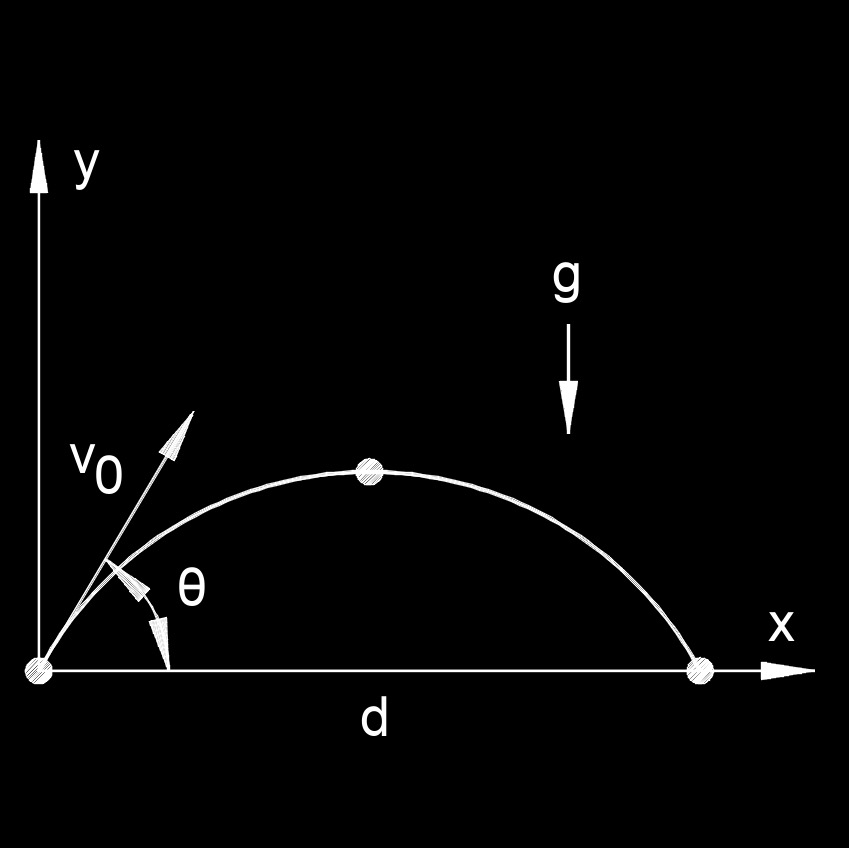Projectile Launch Angle
Projectile Launch Angle formula
|
||
| \( \theta \;=\; \dfrac{ v_o^2 \cdot sin(2\theta) }{ g } \) | ||
| Symbol | English | Metric |
| \( \theta \) = Angle of the Initial Vertical from x-axis | \( deg \) | \( rad \) |
| \( v_o \) = Initial Speed of the Projectile | \(ft\;/\;sec\) | \(m\;/\;s\) |
| \( g \) = Gravitational Acceleration | \(ft\;/\;sec^2\) | \(m\;/\;s^2\) |
 Projectile launch angle is the angle at which an object (a projectile) is launched relative to a reference direction, usually the horizontal plane, when it’s set into motion under the influence of gravity (and typically no other forces like air resistance, unless specified). It’s a critical factor in determining the trajectory, range, and height of the projectile’s path.
Projectile launch angle is the angle at which an object (a projectile) is launched relative to a reference direction, usually the horizontal plane, when it’s set into motion under the influence of gravity (and typically no other forces like air resistance, unless specified). It’s a critical factor in determining the trajectory, range, and height of the projectile’s path.- The horizontal distance the projectile travels is maximized at a launch angle of \(45^{\circ}\) (assuming no air resistance and a flat surface), because this balances the horizontal and vertical components optimally.
- A steeper angle (closer to \(90^{\circ}\)) sends the projectile higher but reduces its range.
- The time in the air increases with a higher angle up to \(90^{\circ}\), where it’s longest (but range drops to zero since it goes straight up and down).
- In real life, like with cannons, basketball shots, or spacecraft, air resistance and other factors tweak this, but the launch angle is still the starting point for predicting the path.

